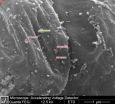(Press-News.org) Producing second-generation biofuel from dead plant tissue is environmetally friendly - but it is also expensive because the process as used today needs expensive enzymes, and large companies dominate this market. Now a Danish/Iraqi collaboration presents a new technique that avoids the expensive enzymes. The production of second generation biofuels thus becomes cheaper, probably attracting many more producers and competition, and this may finally bring the price down.
The world's need for fuel will persist, also when the Earth's deposits of fossil fuels run out. Bioethanol, which is made from the remains of plants after other parts have been used as food or other agricultural products, and therefore termed "second generation", is seen as a strong potential substitute candidate, and countries like the United States and Brazil are far ahead when it comes to producing bioethanol from plant parts like corn or sugar canes. Corn cubs and sugar canes are in fact plant parts that can also be used directly as food, so there is a great public resistance to accept producing this kind of bioethanol. A big challenge is therefore to become able to produce bioethanol from plant parts, which cannot be used for food.
"The goal is to produce bioethanol from cellulose. Cellulose is very difficult to break down, and therefore cannot directly be used as a food source. Cellulose is found everywhere in nature in rich quantities, for example in the stems of the corn plant. If we can produce bioethanol from the corn stems and keep the corn cubs for food, we have come a long way", says Per Morgen, professor at the Institute of Physics, Chemistry and Pharmacy, University of Southern Denmark.
Cellulose is organized in long chains in the plant's cell walls, and they are hard to break down. However, it is not impossible: There are on the market various patented enzymes that can do the job and break down cellulose into sugar, which then is used to produce bioethanol.
"But the patented enzymes are expensive to buy. We are proud to now introduce a completely enzyme-free technique that is not patented and not expensive. The technique can be used by everybody ", explains Per Morgen.
Together with colleagues from the University of Baghdad and Al-Muthanna University in Iraq, he explains that it is not an enzyme, but an acid that plays the main role in the new technique. The acid is called RHSO3H, and it is made on the basis of rice husks.
"My Iraqi colleagues have made the acid from treated rice husk. The worldwide production of rice generates enormous amounts of rice husk and ashes from burning the husk, so this material is cheap and easy to get hold of", he says.
It's all about the acid
The ashes from burnt rice husks have a high content of silicate, and this is the important compound in the production of the new acid. The scientists paired silicate particles with chlorosulfonic acid and this made the acid molecules attach themselves to the silicate compounds.
"The result was an entirely new molecule - the acid RHSO3H - which can replace the enzymes in the work of breaking down cellulose to sugar", explains Per Morgen.
He is particularly proud that all levels in this new way of producing bioethanol are environmentally friendly and accessible for all: The catalyst acid is made from readily available plant left overs, and it can be reused many times. The recipe cannot be patented and the bioethanol is produced from cellulosic plants that cannot otherwise be used for anything else."Cellulose is the most common biological material in the world, so there is plenty of it", he adds.
Since 2010 it has been mandatory in Denmark to add five per cent ethanol to all gasoline sold in the country. You can add up to 85 per cent bioethanol to gasoline, and this is common in several South American countries. Danish research institutions and DONG Energy (denmark) have great focus on how to produce bioethanol from otherwise useless crop residues such as straw.
The use of bioethanol instead of gasoline reduces the CO2 emissions from cars and fossil fuel consumption.
HOW DID THE SCIENTISTS MAKE THE NEW ACID?
3 grams of ash from burned rice husk were mixed with 100 ml of caustic soda (NaOH) in a plastic container. The solution was stirred for 30 minutes at room temperature so that the ash content of the silicate was converted to sodium silicate. To the solution was added nitric acid to control its concentration, and then chlorosulfonic acid was added. When the pH approached 10, a white gel began to form. The addition of nitric acid was continued until the pH reached 3, where after the gel rested for 24 hours at room temperature. Then it was centrifuged six times with distilled water and finally the product was purified with acetone. The product was then dried at 110 degrees Celsius for 24 hours and grounded into a fine powder weighing 6.4 grams. This powder was RHSO3H.
INFORMATION:
Contact Professor Per Morgen, Department of Physics, Chemistry and Pharmacy, University of Southern Denmark. Email permorgen@sdu.dk Telephone: +45 6550 3529 and +45 2272 3529.
Photo of corn stems: Colourbox
Ref: M. K. Hello, H. R. Hasan, M. H. Sauodi, P. Morgen: Cellulose hydrolysis of silica modified with chlorosulphonic acid in one pot synthesis, Applied Catalysis A, General (2014).
Now it will become cheaper to make second-generation biofuel for our cars
2014-02-24
ELSE PRESS RELEASES FROM THIS DATE:
Biomedical bleeding affects horseshoe crab behavior
2014-02-24
DURHAM, N.H. – New research from Plymouth State University and the University of New Hampshire indicates that collecting and bleeding horseshoe crabs for biomedical purposes causes short-term changes in their behavior and physiology that could exacerbate the crabs' population decline in parts of the east coast.
Each year, the U.S. biomedical industry harvests the blue blood from almost half a million living horseshoe crabs for use in pharmaceuticals — most notably, a product called Limulus amebocyte lysate (LAL), used to ensure vaccines and medical equipment are free ...
Significant discrepancies between FISH and IHC results for ALK testing
2014-02-24
DENVER –The findings of a recent study indicate that routine testing with both fluorescent in situ hybridization (FISH) and immunohistochemistry (IHC) may enhance the detection of ALK-positive non-small cell lung cancer (NSCLC). Accurate determination of ALK-positive tumors is necessary to identify patients with advanced NSCLC who are most likely to benefit from targeted therapy with an ALK inhibitor.
The discovery of ALK rearrangement in about 1% to 7% of NSCLCs led to the development of ALK inhibitors, such as crizotinib, which have significantly improved treatment ...
Researchers find flowing water can slow down bacteria
2014-02-24
In a surprising new finding, researchers have discovered that bacterial movement is impeded in flowing water, enhancing the likelihood that the microbes will attach to surfaces. The new work could have implications for the study of marine ecosystems, and for our understanding of how infections take hold in medical devices.
The findings, the result of microscopic analysis of bacteria inside microfluidic devices, were made by MIT postdoc Roberto Rusconi, former MIT postdoc Jeffrey Guasto (now an assistant professor of mechanical engineering at Tufts University), and Roman ...
Tip to dieters: Beware of friends and late night cravings
2014-02-24
There's more to dieting than just sheer willpower and self-control. The presence of friends, late night cravings or the temptation of alcohol can often simply be too strong to resist. Research led by Heather McKee of the University of Birmingham in the UK monitored the social and environmental factors that make people, who are following weight management programs, cheat. The study¹ is published in the Springer journal Annals of Behavioral Medicine.²
Eighty people who were either part of a weight-loss group or were dieting on their own participated in the one-week study. ...
Novel assay developed for detecting ALK rearrangement in NSCLC
2014-02-24
DENVER – Researchers have developed a novel technique for detecting ALK rearrangements in non-small cell lung cancers (NSCLCs) that is more sensitive and easier to perform than currently available techniques. The technique can help enhance the routine practice of diagnostic ALK testing on NSCLCs, which is crucial for identifying patients with advanced NSCLC who are most likely to benefit from targeted therapy with an ALK inhibitor.
None of the current three routine methods used to detect ALK rearrangements in NSCLC is without drawbacks, especially for tissue specimens ...
A fast and effective mechanism to combat an aggressive cancer
2014-02-24
Ovarian cancer accounts for more deaths of American women than any other cancer of the female reproductive system. According to the American Cancer Society, one in 72 American women will be diagnosed with ovarian cancer, and one in 100 will ultimately die of the condition.
Now Prof. Dan Peer of Tel Aviv University's Department of Cell Research and Immunology has proposed a new strategy to tackle an aggressive subtype of ovarian cancer using a new nanoscale drug-delivery system designed to target specific cancer cells. He and his team – Keren Cohen and Rafi Emmanuel from ...
EARTH Magazine: Tsunamis from the sky
2014-02-24
Alexandria, VA – On a beautiful, clear June morning in 1954, a massive wave suddenly swept out of Lake Michigan killing at least seven people along the Chicago waterfront. At the time, the wave was attributed to a storm that had earlier passed over northern Lake Michigan, but how it came to swamp faraway Chicago, with no warning, was not understood.
The Great Lakes, along with the Mediterranean, Japan and many other parts of the world, have a long history of such waves, which have characteristics similar to tsunamis triggered by earthquakes or landslides.
Only recently, ...
Cardiovascular Institute researcher: Cancer drug may lower sudden cardiac death risk
2014-02-24
PROVIDENCE, R.I. – A researcher at the Cardiovascular Institute (CVI) at Rhode Island, The Miriam and Newport hospitals has found that a new class of drugs, originally developed to treat cancer, reduces sudden cardiac death risk after a heart attack. The findings were published online in advance of print in the Journal of the American College of Cardiology.
"Currently, there are limited options to reduce sudden cardiac death following a heart attack," said principal investigator Samuel C. Dudley, M.D., Ph.D., chief of cardiology at the CVI. "The benefit of most drugs ...
Toxic injection with elastic band
2014-02-24
This news release is available in German.
Bacteria have developed many different ways of smuggling their toxic cargo into cells. Tripartite Tc toxin complexes, which are used by bacteria like the plague pathogen Yersinia pestis and the insect pathogen Photorhabdus luminescens, are particularly unusual. Stefan Raunser from the Max Planck Institute of Molecular Physiology in Dortmund and his colleagues from the University of Freiburg have produced extremely accurate and detailed images of these "toxic injections"; they reveal from where the molecule complexes take ...
Precursor of multiple myeloma more common in blacks than whites, Mayo study finds
2014-02-24
ROCHESTER, Minn. — Feb. 24, 2014 — Blacks may be twice as likely as whites to develop multiple myeloma because they are more likely to have a precursor condition known as monoclonal gammopathy of undetermined significance (MGUS), a Mayo Clinic study has found. Not only is MGUS more common in blacks, but the type seen in the black population is also more apt to have features associated with a higher risk of progression to full-blown multiple myeloma, a cancer of a type of white blood cell in bone marrow.
The findings, which appear in the journal Leukemia, are from the ...


